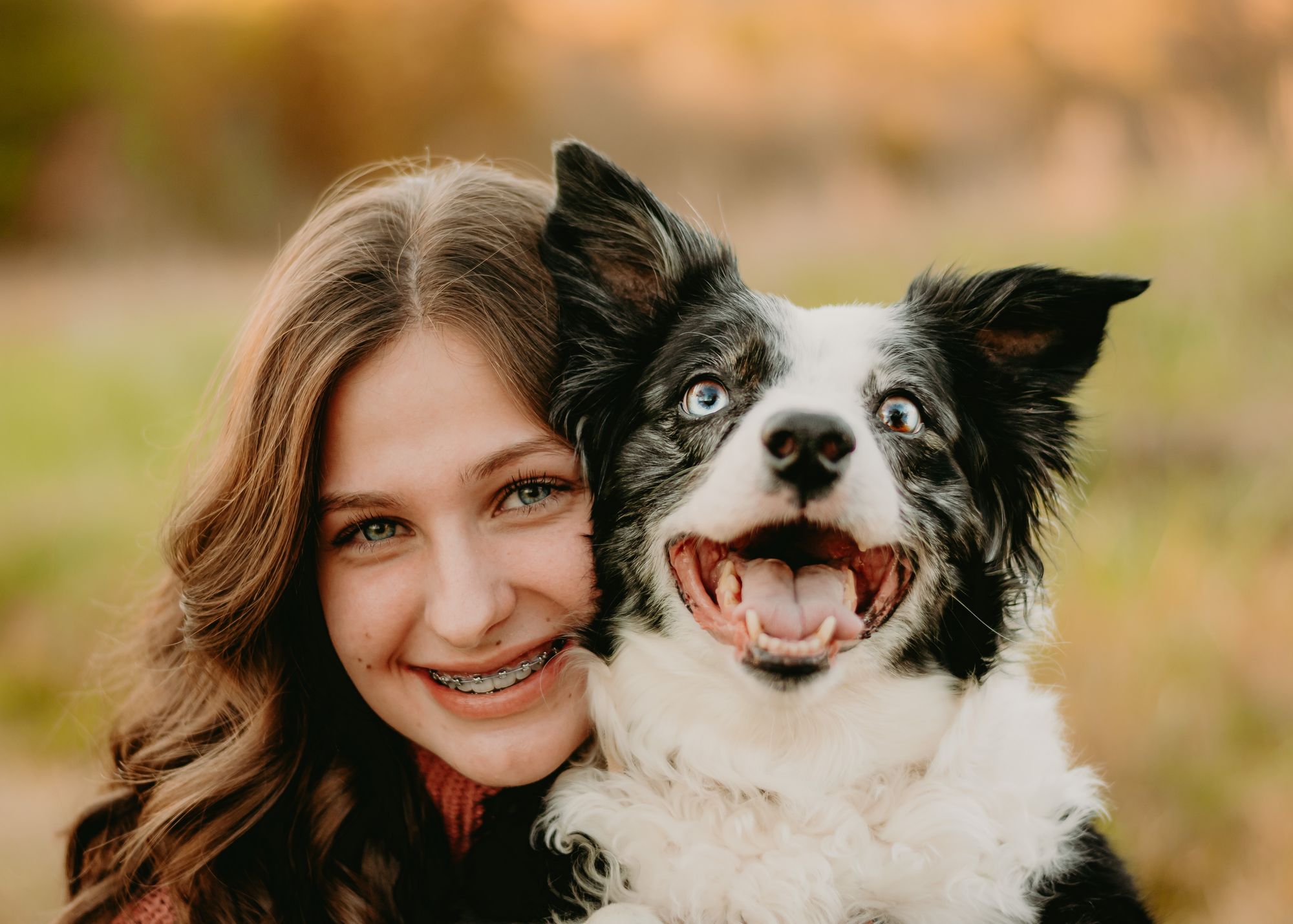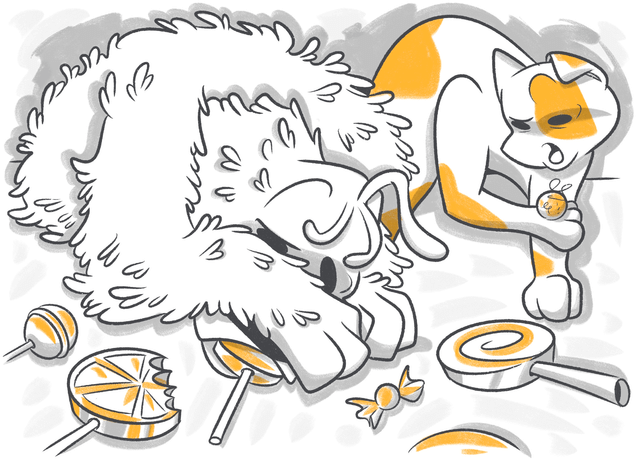Keeping our dogs healthy includes taking care of their oral health. Unfortunately, dental disease or rotting teeth in dogs is common since many pet owners don’t get to routinely check on their dog's teeth. Not to mention, some dog breeds are more predisposed to dental disease. Having said this, how can we properly care for our dog's teeth, and how do we know if something is going wrong?
Our dogs rely on us to keep their teeth clean. After all, they aren't able to brush their teeth on their own. Aside from regularly brushing their teeth and giving them dental treats, it would help to bring them to the vet for oral cleaning and care at times to ensure that their teeth are okay.
Stop Googling - Ask a Real Vet
In this article, we'll be discussing how to spot signs that a dog's teeth are rotten, what causes it, and what to do if your dog has rotten teeth. In line with this, we will be talking about oral diseases in dogs, such as periodontal disease, and how they may affect our dog's overall health and wellness.
Content:
- What Do Rotten Dog Teeth Look Like
- Signs and Symptoms of Rotten Teeth in Dogs
- What Causes Rotten Dog Teeth
- What to Do If Your Dog Has Rotten Teeth
- FAQs
- Conclusion
What Do Rotten Dog Teeth Look Like
In a general sense, rotten dog teeth are a term that describes any dental disease that a dog may be suffering from. Typically, it is associated with discolored, falling, or painful teeth. But first, let’s take a look at the anatomy of a dog’s tooth.
Like that of humans, a dog’s tooth consists of a crown, a pulp, and a root. Putting the tooth in place and connecting it to the blood supply inside the body is the gingiva (gums). In particular, the pulp, which is located deep within the tooth from root to crown, is the part of the tooth that’s alive. Thus, it is the pulp that hurts a lot when a dog has a rotten tooth.
According to NCBI studies in many cases, thick plaque called calculus, in hues of gray, green, or brown, covers the rotten teeth. Oftentimes, the molar and premolar teeth are the ones more severely affected, but they may also develop in the incisors or front teeth of the dog.
Meanwhile, there are rotten dog teeth with a crown that looks normal despite having a bad infection beneath their gums. More commonly known as gingivitis, the disease is characterized by red-looking gums that easily bleed.
Other cases of rotten teeth may be characterized by exposed roots as a result of decay in the dog’s gingiva, the structures that connect the tooth and bones, as well as the jaw bone. This phenomenon is called periodontal disease. As a manifestation of the disease, there appears to be a retraction in the gum line, making the tooth appear longer, or it may show many roots of molars and premolars.
Signs and Symptoms of Rotten Teeth in Dogs
Symptoms such as falling teeth or bleeding gums are some obvious signs that indicate rotten teeth in dogs. On the other hand, other signs may not be physically apparent, especially when pet owners don’t look at their dog’s teeth routinely. One of the symptoms of rotten teeth that pet owners first notice isn’t visual but olfactory. (albeit one that’s undesirable). Yes, you got it right — it’s bad breath or halitosis.
Below are the possible signs and symptoms of rotten teeth in dogs:
- Bad breath;
- Discolored teeth;
- Missing or broken teeth;
- Loose teeth;
- Eye or nose discharge;
- Some areas of the face may be swollen (ex. Under the jaw or eye);
- Bleeding in the mouth;
- Inflamed or bleeding gums (in the early stages of periodontal disease);
- Drooling excessively;
- Pawing or rubbing at the face;
- Refusal to be touched in their head or muzzle;
- Unwillingness to eat hard foods or anything at all;
- Chewing on just one side of the mouth;
- They may refuse to play with their chew toys or say no fetch games;
- Very loose teeth that may fall out (often in the late stages of dental disease) may leave an open pocket that becomes susceptible to bacteria, which can further aggravate the pain.
To better monitor your dog and detect any symptoms as soon as your dog exhibits them, a high-quality pet camera such as the Petcube Camera will come in handy. Allowing you to monitor 24/7, Petcube Cam helps you immediately notice if something is wrong.
What Causes Rotten Dog Teeth
If your dog has rotting teeth, you probably want to know the answer to the question, "Why are my dog’s teeth rotting?" There are several possible causes for rotten dog teeth. Among these are:
Lack of dental hygiene and oral care
The most common cause is a lack of dental hygiene and oral care. Regularly brushing our dog’s teeth with a dog toothpaste that’s been recommended by a vet goes a long way toward preventing our dogs from getting dental disease.
Breed
Regular brushing doesn’t completely diminish the risk. This is because some dog breeds, such as Yorkies and Dachshunds, are genetically predisposed to dental disease because of the shape of their mouths and faces. Similarly, brachycephalic breeds with crowded mouths, such as Pugs, Shih Tzus, and French Bulldogs, are more prone to developing rotten teeth.
Aging
While aging isn’t a direct cause of rotten teeth, accumulated years of poor oral and dental hygiene make rotten teeth more prominent in elderly dogs.
What to Do If Your Dog Has Rotten Teeth

"If my dog’s teeth are rotting, what can I do?"
What to do if your dog’s teeth are rotting would depend on the severity of your dog’s case. If you notice signs that your dog has rotten teeth, you should bring your dog to the vet for diagnosis and treatment.
Your vet may suggest the extraction of one or more teeth. If so, it might be best to heed their advice. This is because antibiotics won’t be able to cure rotten teeth. And if they are left in your dog’s mouth for a long time, it may cause dental disease to spread further. Not to mention the pain that it may cause them. Before extraction, antibiotics may be given to manage the pain.
Note that if your pet is exhibiting symptoms of rotten teeth, brushing their teeth may not be able to solve the problem since this won’t be able to stop the bacteria. Because of this, a dental procedure may be required.
While we wish that our dog doesn’t go through any pet emergencies related to rotten teeth or anything that requires emergency care, we can never be so sure. With this in mind, we need to be prepared if it happens. One wise way to do so is to have a Pet Emergency Fund that gives you security and peace of mind. That way, you won’t have to worry about the expenses and can focus more on providing the best care for your pet during pet emergencies.
FAQs
If my dog has rotten teeth, what is the cost of removal?
The cost of tooth extraction varies widely depending on the tooth type, the severity, and the kind of extraction or dental repair needed. In general, you may expect to spend around $500–$900 per tooth.
Can rotten teeth kill a dog?
Yes, severely rotten teeth or periodontal disease can be life-threatening in dogs. It increases the risk of dogs getting diseases that affect vital organs, including heart disease, liver disease, and kidney failure, among others. Thus, if rotten teeth are left untreated, they may potentially be fatal.
Conclusion
Because rotten teeth can cause a lot of problems down the line, it is best to take precautions to protect your dog’s teeth as early as possible. By making it a routine to take care of your dog’s dental and oral health through proper dental hygiene and care, as well as veterinary checkups and dental cleanings from time to time, you may prevent your dog’s teeth from developing dental disease.
If you notice any signs of bad teeth in your dog, make sure to bring them to the vet to address their oral health before it causes much damage.
Was this article helpful?
Help us make our articles even better









